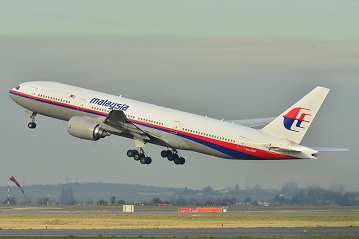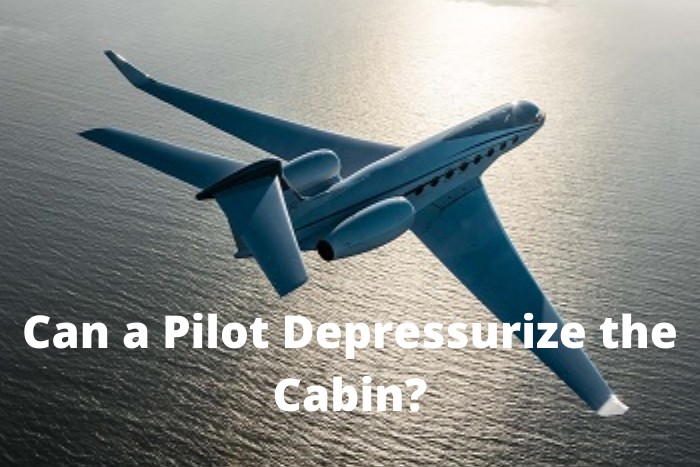
So, you’re wondering, “Can a Pilot Depressurize the Cabin?”
It hasn’t been very long since the disaster of MH370 and speculation that the airplane was decompressed during flight incapacitating everyone on board.
Another accident involving a Helios Boeing 737 Flight 522 from Cypress to Prague, Czech Republic decompressed and resulted in the largest airline disaster in Greece.
The other high-profile incident was when Payne Stewart was on a chartered Learjet from Florida to Dallas when the airplane everyone on board became incapacitated.
This raises the question of whether the pilot can decompress the cabin.
Let’s explore the possibilities.
Can a Pilot Depressurize the Cabin?
The aircraft pressurization system is normally an automated control, but it does have the capacity of being manually operated. Pilots have complete control over every system of the aircraft so yes they can depressurize the cabin.
1. The Purpose of Aircraft Pressurization
The pressurization system of an aircraft is designed to keep the occupants of the aircraft at an altitude that is comfortable for breathing without supplemental oxygen.
As an aircraft climbs in altitude the air becomes less dense so air must be pumped into the aircraft cabin (pressure vessel) to maintain a higher density of air than exists at high altitude. The aircraft engines compress the air squeezing the



molecules of oxygen tighter together to provide a safe breathable environment. Without this compression of air death will ensue very rapidly.
2. Federal Aviation Regulations
The Federal Aviation Regulations are extremely specific about the use of oxygen for a very good reason. Anyone that has ever experienced hypoxia can relate to these reasons and to their necessity.
FAR part 91 states specifically that you cannot operate an airplane of civil registry:
(1) At cabin pressure altitudes above 12,500 feet (MSL) up to and including 14,000 feet (MSL) unless the required minimum flight crew is provided with and uses supplemental oxygen for that part of the flight at those altitudes that is of more than 30 minutes duration;
(2) At cabin pressure altitudes above 14,000 feet (MSL) unless the required minimum flight crew is provided with and uses supplemental oxygen during the entire flight time at those altitudes; and
(3) At cabin pressure altitudes above 15,000 feet (MSL) unless each occupant of the aircraft is provided with supplemental oxygen.
When a pressurized cabin is concerned each occupant of the aircraft must have at least a 10 minute supply of oxygen available.
The regulations become more specific about crew members and you can read about them here.
3. HYPOXIA, A Subtle Deadly Danger
When I was learning to fly there was a lot of World War II Pilots who were still instructing and they gave me instruction about things that are never taught in a flight school.
One of those things was learning about hypoxia which is only taught to military Pilots.
Hypoxia is an absence of enough oxygen in the tissues to sustain bodily functions. It can kill quickly.
4. Rapid Decompression
I have never experienced rapid decompression in an airplane and I really don’t want to. Especially an explosive one.
At an altitude of 35,000 feet, you have approximately 30 seconds of useful ability in order to put on an oxygen mask so you better have your sense about you.
The flight crew has quick donning oxygen masks which must be put on with one hand in 5 seconds so pilots are trained to do that.
If the airplane fails to compress the pilots have an audible warning that informs them that there is a problem but it doesn’t always make it clear to the crew and the example is a flight in Europe.
Helio Airways flight 522, a Boeing 737 flying from Cypress to Athens in 2005 had this happen and the flight crew was unable to figure out the problem and resulting in the largest Aviation disaster in Greece.
5. Why Would the Pilots Decompress an Airplane?
The idea of decompressing an aircraft has been discussed in order to thwart any possibility of hijacking,
However, this idea is not exactly something that I personally think would work unless there were many more lives at stake than those aboard the aircraft.
There is a high probability that all of the passengers and crew members that did not have oxygen would perish.
That is not something as a pilot that I would care to have on my conscience so I really can’t think of any other reason that the pilots would decompress the airplane.
Final Thoughts
Trust me I know that Pilots have full control of everything that goes on in the airplane including the pressurization system.
I understand the public being interested in what happened to airplanes like MH370 but I don’t really see any necessity to ever decompress an aircraft unless there was some type of an emergency.
I have to be fully honest here and tell you that I have missed the checklist item for this pressurization panel and failed to turn it back to auto.
Fortunately my experience with hypoxia in my early years of flying allowed me to catch the mistake early on in the flight and rectify the situation.
Read This Next: Why Do Private Jets Fly at Higher Altitudes?
